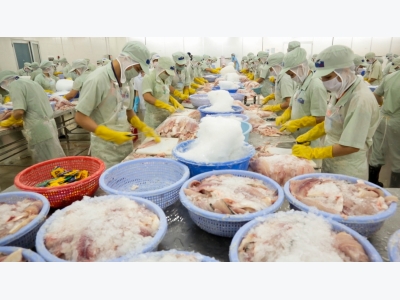Farmed seafood exports likely to reach US$30-35 bil by 2030

Vietnam’s farmed seafood output is likely to hit 4.7 million tonnes with export earnings estimated at US$30-35 billion by 2030, said Chairman of the Vietnam Seaculture Association (VSA) Nguyen Huu Dung at a May 5 workshop in Ho Chi Minh City.
Dung said to reach the figures, the government needs to adopt policies aimed at encouraging investment in aquaculture.
Vietnam has been one of the world’s leading countries in sea-culture since 2012 and its seafood exports have increased over recent years, he added.
Nguyen Ba Son, a representative from the Directorate of Fisheries, said by the end of 2016, the country had 6,300 hectares of ponds and nearly 1.2 million cubic meters of cages to raise saltwater fish.
The output of saltwater fish in 2016 nearly doubled that of 2010, reaching 28,300 tonnes.
Experts suggested State management agencies and businesses clearly define consumption markets to avoid massive development before investing in the field.
Lucas Manomaitis, Technical Director for Aquaculture in Southeast Asia of the US Soybean Export Council, said most of fish resources in the region, including Vietnam, are being overexploited, resulting in a decline in the supply of sea fish.
To prepare for the development of the sea fish farming sector, State management agencies and farmers should study the demand of international customers and increase product quality, he noted.
The VSA proposed incentive policies to attract investment and support the sector’s sustainable development, while carrying out programmes to inspect and improve the marine ecological environment.
Related news
 US extends anti-dumping duties on VN frozen shrimp
US extends anti-dumping duties on VN frozen shrimp The United States International Trade Commission (USITC) voted to extend anti-dumping duties on the import of frozen warmwater shrimp for five more years
 China emerges as biggest importer of Vietnam tra fish
China emerges as biggest importer of Vietnam tra fish China overtook the U.S. as the largest importer of Vietnamese tra (pangasius) fish in the first quarter of this year
 Lease, seed and repeat: GreenWave’s replicable aquaculture
Lease, seed and repeat: GreenWave’s replicable aquaculture When Bren Smith, founder of Greenwave, started farming oysters 15 years ago, he wondered how he could do so on 20 acres and still be economically viable